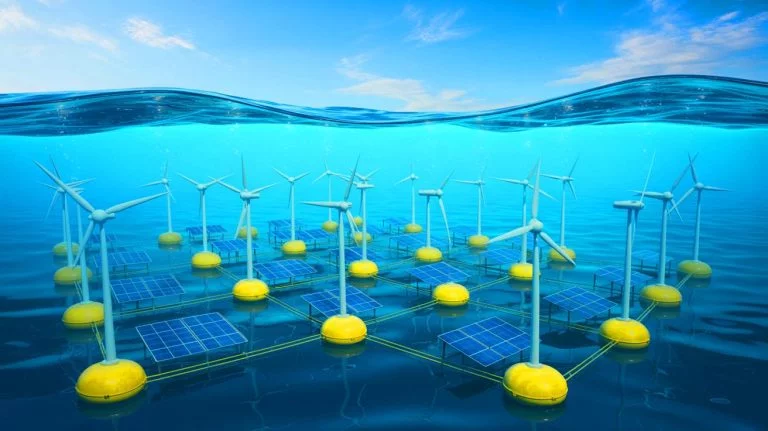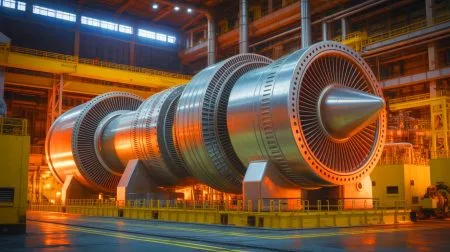| IN A NUTSHELL |
|
The pursuit of progress has taken on a new meaning in recent years. Today, it’s not just about financial success but also about advancing sustainable practices. A group of dedicated scientists in Scotland has discovered an extraordinary underwater treasure, promising a potential leap forward in eliminating diesel fuel from the shipping industry. This revolutionary find may be the key to a cleaner and more sustainable future, as it aligns with the global push for decarbonization. The implications of this discovery are profound, and the world watches eagerly as this project unfolds.
The Hidden Treasure Beneath the Waves
When envisioning sustainable mobility, electric cars and bikes often come to mind. Yet, the shipping industry plays a pivotal role in the global economy, efficiently transporting massive cargoes across the globe. As critical as it is, this industry also poses a significant environmental challenge. Finding an alternative to diesel has proven difficult, with current efforts like the hydrogen-diesel hybrid boats in the United States still in early stages. However, a more promising solution has emerged from Glasgow-based Oasis Marine. Their innovative approach involves using buoys connected to offshore wind farms, creating a sustainable energy supply chain for ships.
This ingenious system taps into a vast, previously unused underwater energy source. By harnessing clean and renewable energy, Oasis Marine presents a compelling alternative to diesel, potentially transforming the maritime industry. The implications are enormous, as this technology could lead to a significant reduction in greenhouse gas emissions, aligning perfectly with global environmental goals.
How the eyewear industry is adopting green practices to foster sustainability
Scotland’s Vision: Emission-Free Refueling
Oasis Marine is at the forefront of marine transportation innovation, focusing on renewable energy solutions. Their latest project, the Oasis hydrogen buoy, offers a groundbreaking offshore refueling infrastructure that is both cheaper and emission-free. This system is a game-changer, combining wind turbines and solar panels on floating buoys to produce hydrogen via electrolysis. The hydrogen is then stored in durable tanks, ready to refuel passing vessels.
This approach not only provides a safer and more accessible refueling option but also eliminates the need for more complex systems like ammonia storage or high-pressure tanks. Having been rigorously tested at the Kelvin Hydrodynamic Laboratory in Glasgow, the technology is now ready for deployment. The successful implementation of this system could mark the end of diesel fuel reliance in the shipping industry.
Unlocking the Potential of Green Hydrogen
Saltwater is one of the most abundant resources on Earth, and Oasis Marine has found a way to turn this into a true underwater treasure. The Oasis buoys can potentially generate green hydrogen and supply electrical energy, providing a dual benefit. Moreover, these buoys can connect to existing renewable energy infrastructures like floating wind power plants. This synergy could facilitate a comprehensive decarbonization of the shipping industry, which currently contributes to 13% of CO2 emissions.
The ability to produce green hydrogen using only seawater represents a monumental leap forward. It brings the maritime industry closer to a sustainable future, leveraging the vast potential of the ocean’s resources. The widespread adoption of this technology could significantly reduce the environmental footprint of global shipping.
The Future of Green Hydrogen
Until recently, green hydrogen was considered a costly and challenging energy source to store. However, advancements like the Oasis Hydrogen Buoy and innovative solutions from countries like Australia are changing this narrative. These breakthroughs are paving the way for a broader utilization of this underwater treasure in powering engines worldwide.
The diversification of green hydrogen technology is overcoming previous obstacles, making it a more viable and attractive option. As these solutions continue to develop, they promise a future where the environmental impact of shipping is significantly minimized. The question remains: How soon can the world fully embrace this transformative energy source, and what will it mean for the broader push toward sustainability?
Did you like it? 4.5/5 (26)






Wow, the potential for green hydrogen is amazing! How long before we see this tech rolled out globally? 🌍
Isn’t it a bit too optimistic to think this can replace diesel entirely? 🤔
Thanks for shedding light on this! Scotland leading the way in sustainable tech is impressive! 👏
How reliable are these green hydrogen buoys in rough seas?
Amazing article, but why isn’t the government doing more to support this tech?